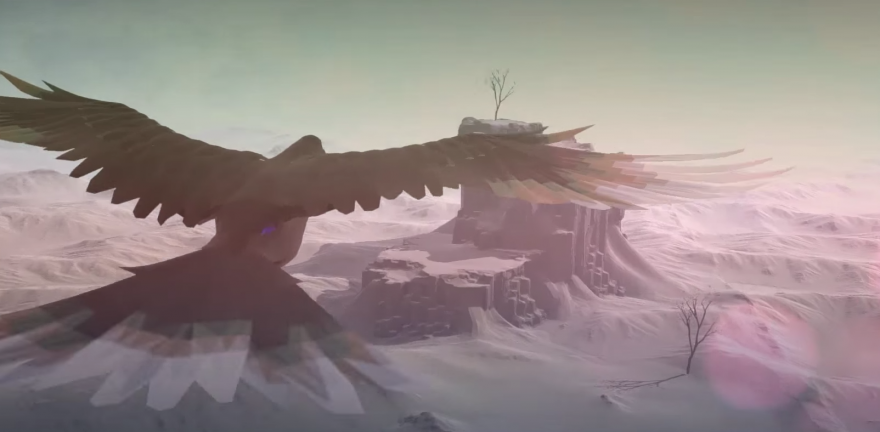It’s the little things that makes Vane one of the most gorgeous looking games in development right now: the graceful twirl of leaves loosening from thin branches, clouds of dust that kick up behind a small, running figure, or the beating of a bird’s wings against the hot desert air.
In games, beauty isn’t just the product of a pleasing art style. The coding has to do its part too, and a new blog post from developer Friend & Foe Games shows just how much painstaking detail can go into perfecting the systems that many people take for granted.
According to Matt Smith of Friend & Foe, bird flight mechanics in Vane used to follow what he called the “Magic Airplane” model, a mechanical approach that simplified the actual phenomenon of avian aeronautics. It would basically register horizontal and vertical turns and then fake gravity by applying downward velocity, resulting in this:
The team wasn’t pleased with the visual effect this created. Some more tinkering eventually turned out a much more complex algorithm that implements elements like forward thrust, air resistance, and more.
“A big focus for us on Vane is verisimilitude; we want all of our systems, stories, and mythology to be internally consistent,” writes Matt. “With that in mind, I set about reworking the flight mechanics to be more ‘physics-y’ and less robotic.”
Matt calls the resulting system the “Pseudo Physics” model, and goes into more detail about how it works in his blog post. To a non-programmer or someone who isn’t great at physics, a formulaic breakdown of in-game flight mechanics might not mean much, but check out the difference these changes make visually:
One of the most notable things in the second gif is the way the camera moves, which Friend & Foe promises to touch on in another blog post.
You can find out more about Vane on its website and development blog.
